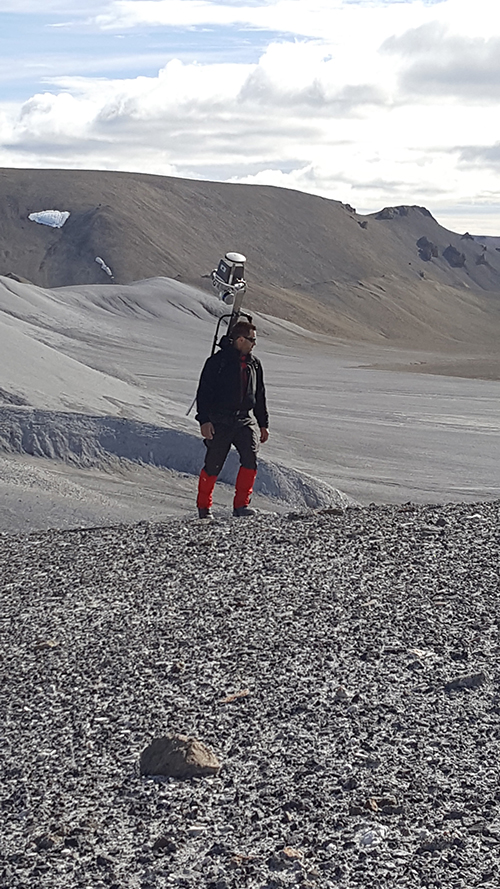Dr. Michael Zanetti is a planetary scientist at NASA’s Marshall Space Flight Center. Originally from Southington, Connecticut, Dr. Zanetti received his B.Sc. from Central Connecticut State University (CCSU) in 2006, and a M.Sc. from the Institut für Planetologie at the Westfälischen Wilhelms-Universität Münster (WWU-M) in Münster, Germany with Dr. Harald Hiesinger in 2011. Dr. Zanetti earned his Ph.D. at Washington University in St Louis, Missouri with Dr. Bradley Jolliff in 2015. For his dissertation, Dr. Zanetti investigated the complexity of impact crater ejecta, with projects focused on the 3D reconstructive geologic mapping of the lunar crater Aristarchus, constraining the influence of self-secondary cratering on the lunar cratering chronology, and the detailed investigation impact melt glass from the Mistastin Lake Impact Structure (currently the highest temperature surface rock known on Earth).
Following his dissertation, Dr. Zanetti completed a post-doctoral fellowship at the University of Western Ontario in 2018, supervised by Drs. Catherine Neish and Gordon Osinski. His post-doc work focused on using terrestrial periglacial features and gullies at the Haughton Impact Structure, Devon Island, in the Canadian High-Arctic and flood basalt lavas at Craters of the Moon National Monument in Idaho, USA as planetary analogs for Mars and the Moon, resp. This work integrated multiple remote-sensing datasets, including satellite radar data to understand how radar backscatter is affected by surface roughness variations. Field studies included the use of cutting-edge backpack-mounted mobile LiDAR scanning data collected in collaboration with colleagues at the Finnish Geospatial Research Institute in Helsinki.
Dr. Zanetti joined the planetary science group at Marshall Space Flight Center in 2018, where he continues is research in mobile LiDAR scanning to facilitate terrestrial and planetary geomorphologic research. His main research interests are in impact cratering ejecta processes (e.g. impact melt emplacement) and the lunar chronology, periglacial processes on Earth and Mars, and comparative planetology to advance space exploration. He works to integrate scientific payloads aboard NASA’s Space Launch System (SLS) rocket, and works with engineering teams to promote and advocate for science as NASA ventures deeper into our Solar System.


